Focused on scaling global market presence? Building brand awareness in targeted segments? Or achieving efficient customer acquisition and retention?
The strategic application of ecommerce analytics provides leverage to achieve all these goals. Ecommerce reporting empowers brands to make informed decisions, optimize marketing efforts, and ultimately, maximize sales.
This article demonstrates how brands can decode consumer behavior, refine marketing campaigns, and enhance overall business performance through precise tracking and ecommerce data analysis.
What is Ecommerce Analytics?
By dissecting ecommerce data, marketers can see the direct correlation between marketing initiatives and revenue generation. Ecommerce analytics also provides actionable insights for optimizing marketing spend, enhancing campaign targeting, and ultimately, fueling business growth in a competitive environment.
The Foundation of Ecommerce Analytics
The foundation of ecommerce data analytics is built upon the meticulous tracking and analysis of key performance indicators (KPIs) and metrics that directly impact an online business's growth and profitability.
Understanding and analyzing these ecommerce metrics provide actionable insights that drive strategic decisions:
- Traffic sources: Identifies where your visitors are coming from, helping allocate marketing resources more efficiently.
- Conversion rates: Measures the percentage of visitors who complete a desired action, guiding optimizations for website and campaign performance.
- Average order value (AOV): Tracks the average dollar amount spent each time a customer places an order, informing pricing and upselling strategies.
- Customer lifetime value (CLV): Estimates the total revenue a business can expect from a single customer account, emphasizing the importance of customer retention.
- Cart abandonment rates: Highlights the percentage of shoppers who add items to their cart but exit without completing the purchase, pinpointing areas for improving the checkout process.
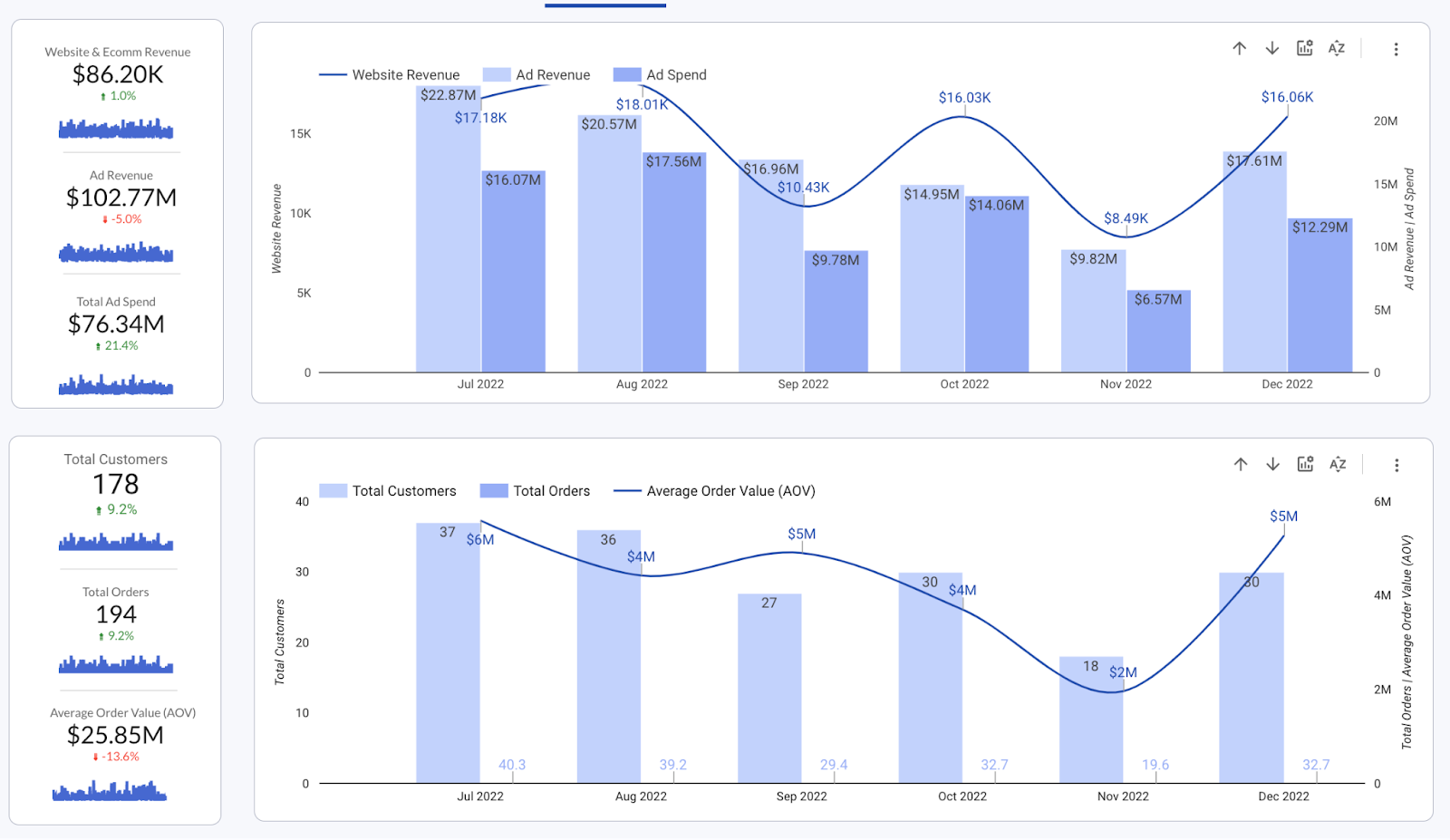
Central to leveraging these metrics is the ecommerce dashboard, an essential tool for integrating and visualizing data across multiple data points. A well-designed ecommerce dashboard delivers a comprehensive overview of an online store's health, encompassing sales performance, customer behavior, and inventory status.
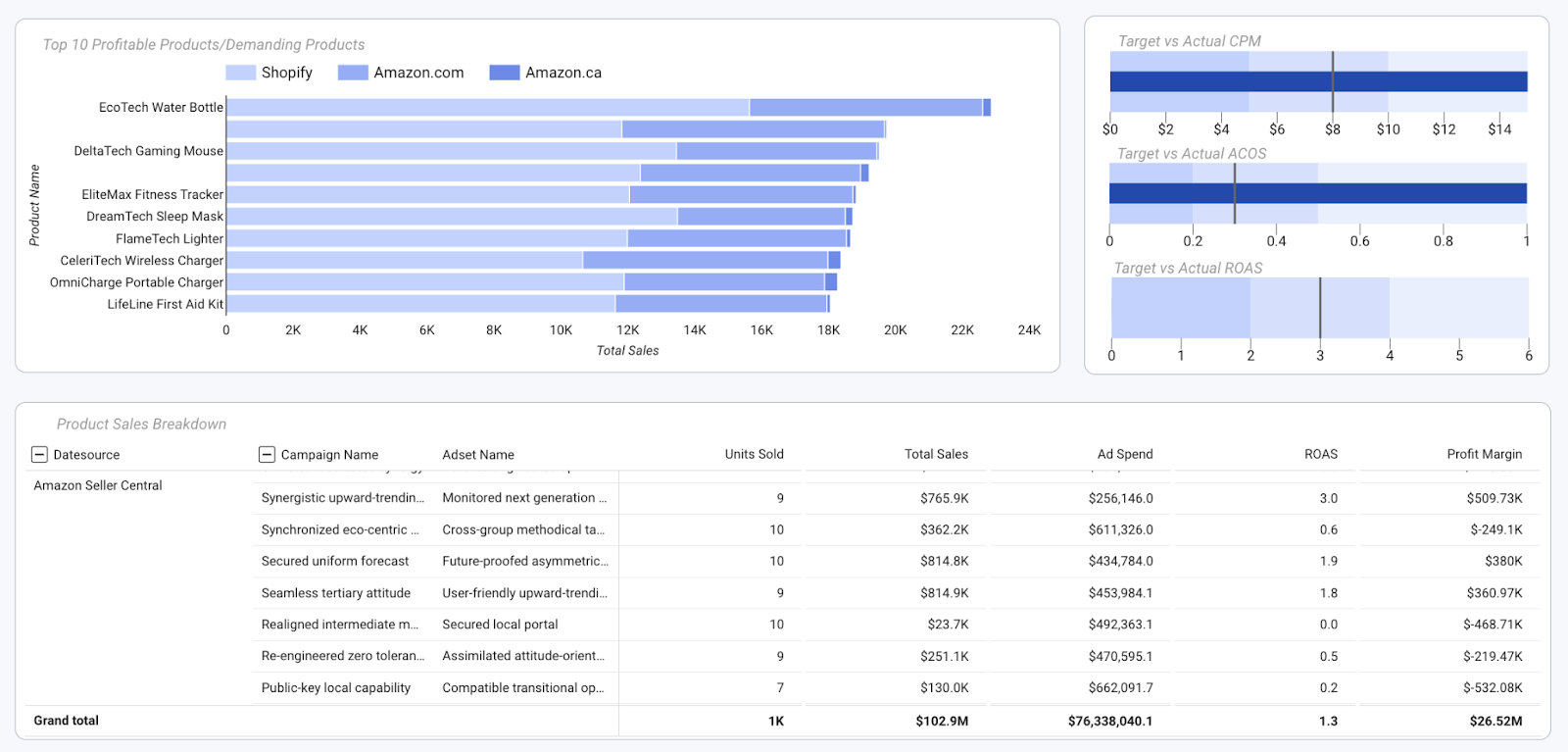
An essential function of an ecommerce dashboard is to measure and optimize business performance across various platforms, such as Amazon, Shopify, and others.
A top-tier ecommerce dashboard also seamlessly integrates data from various sources, including CRM systems, email marketing platforms, and social media, for a holistic view of ecommerce health.
You can expect all these features from an Improvado-powered ecommerce dashboard. The platform manages every step of the process, from collecting ecommerce data from Shopify, Amazon data sources, and marketing platforms to mapping and visualizing this data.
Improvado is an analytics platform, tailored for large enterprises like ASUS, Illy, Monster Energy, and others. As a central hub, it integrates with over 500 Ad, ecommerce, and CRM platforms, centralizing data into a cohesive marketing dataset. On top of this dataset, Improvado builds dashboards tailored to your company's needs. Schedule a demo to learn more about Improvado capabilities.
Advanced Ecommerce Analytics Techniques
After establishing a solid foundation for ecommerce reporting, it's crucial to explore how more sophisticated analytics techniques can further enhance decision-making, personalize customer experiences, and drive revenue growth.
Ecommerce customer data and analytics
Techniques such as customer segmentation allow businesses to divide their customer base into distinct groups based on shared characteristics. The segmentation can be based on demographic data but also behavioral patterns, purchase history, and engagement levels.
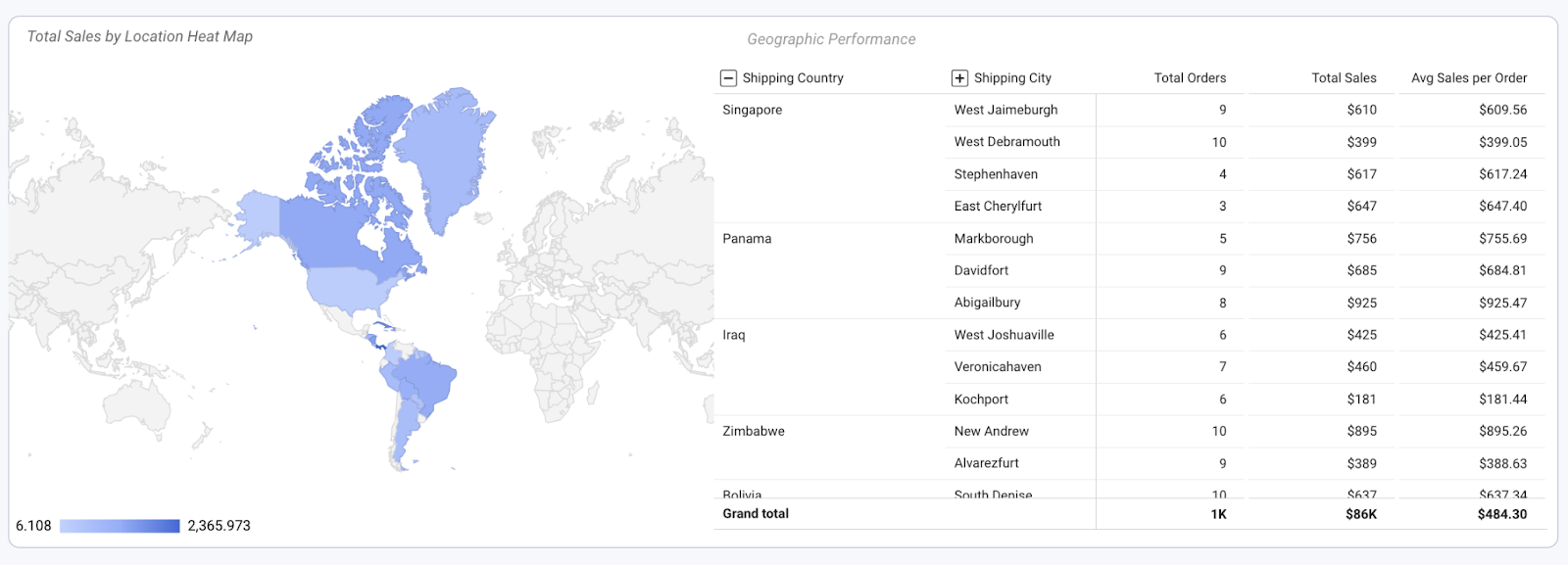
These ecommerce insights enable personalized marketing campaigns that resonate on a more individual level, significantly increasing conversion rates.
Cohort analysis takes this further by tracking the behavior of specific customer groups over time, providing insights into long-term trends and customer lifecycle value.
Predictive analytics
Predictive analytics employs historical data and machine learning algorithms to forecast future customer behaviors, sales trends, and inventory needs.
This ecommerce analytics technique allows brands to anticipate market demands, personalize customer interactions, and optimize supply chain operations with a higher degree of accuracy. Predictive analytics offers a strategic advantage by enabling the identification of potential growth opportunities and areas of risk before they fully emerge.
Key applications include predicting customer lifetime value, identifying likely product recommendations, and forecasting peak demand periods to adjust marketing efforts and inventory levels accordingly. By integrating predictive analytics into their strategy, ecommerce businesses can proactively adjust their approaches to meet future market conditions, leading to enhanced customer satisfaction, increased sales, and improved operational efficiency.
Revenue attribution
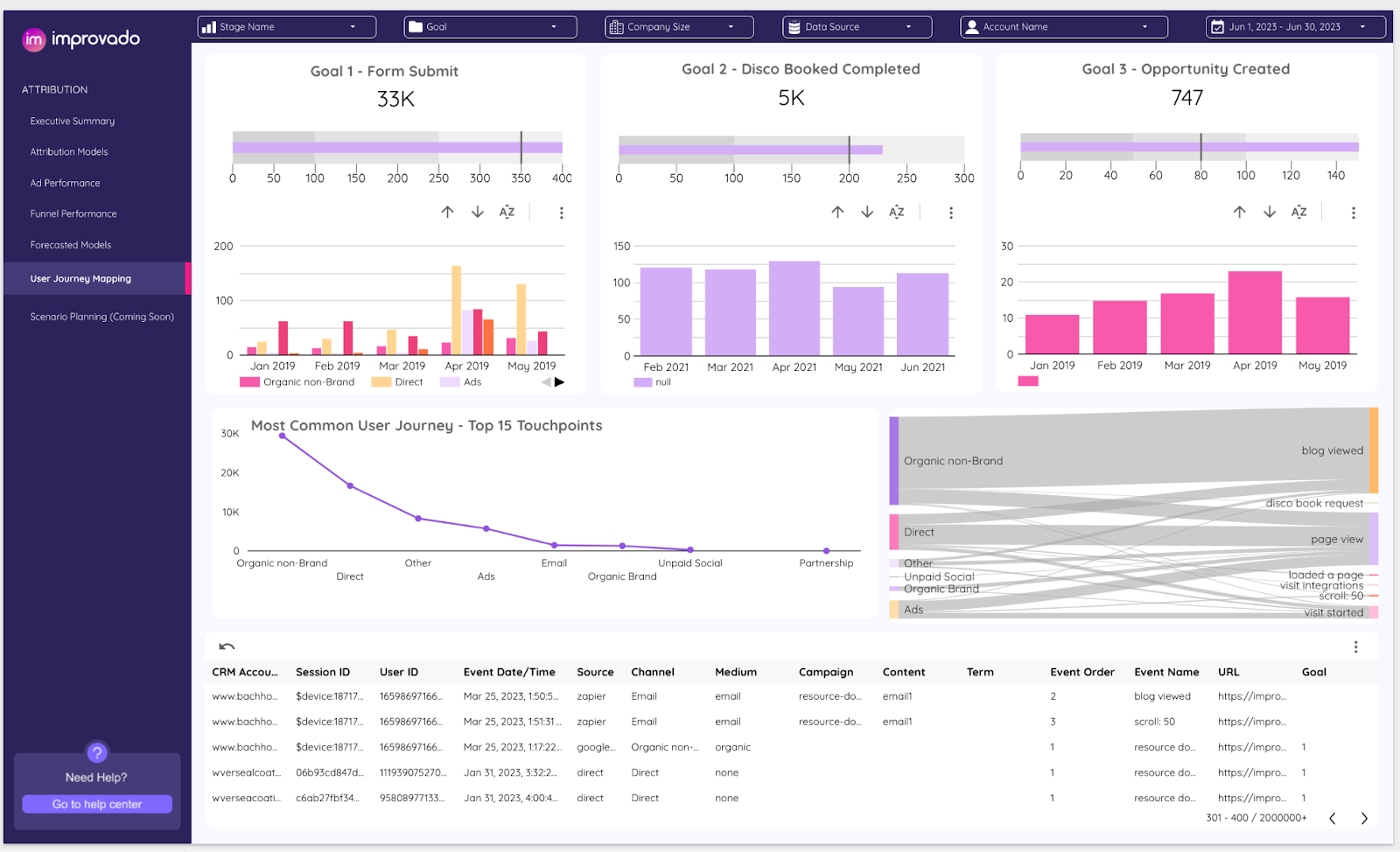
An integral part of advanced ecommerce analytics is revenue attribution. By attributing revenue to specific marketing channels, campaigns, and customer interactions, businesses can uncover the true drivers behind sales. These ecommerce insights are invaluable for allocating marketing spend efficiently, ensuring resources are invested in the channels that yield the highest returns.
To harness data-driven ecommerce insights, ensure your revenue attribution model is equipped with essential components:
- Establish a unified tracking infrastructure that captures every customer interaction across all campaigns and channels.
- Save all raw interaction and advertising data in your data warehouse. The raw data storage allows for historical analysis and the flexibility to apply different attribution models as needed.
- Implement solutions for tracking and mapping ad spend directly from ad platforms.
- Employ robust event streaming technology to capture and process data in real-time.
- Set up granular conversion and event tracking that goes beyond simple sales or email sign-ups, including micro-conversions such as product returns or customer service interactions.
- Utilize flexible identity matching options to track user interactions across different identifiers – like device and family grouping.
One way to approach ecommerce data analytics is by the type of techniques used, while another is focusing on the specific purpose or metrics a brand aims to enhance.
Ecommerce Analytics for Customer Acquisition Efficiency
Ecommerce brands must monitor customer acquisition to directly link marketing efforts to sales performance. This tracking reveals which strategies effectively convert browsers into buyers and recover abandoned carts, optimizing revenue generation.
Here's what you need to focus on.
Advertising analytics for ecommerce
If your company is looking to sharpen its customer acquisition approach, advertising analytics is the place to start.

A holistic approach to ecommerce performance analytics:
- Evaluate ROAS not just as a measure of immediate return but in terms of its contribution to overall revenue and impact on profit margins. A high ROAS is desirable, but if the associated campaigns drive low-margin sales, the overall profit impact may be minimal.
- Similarly, a balanced view of CAC involves understanding its relationship with the average order value (AOV) and profit margins of acquired customers. The goal is to ensure that the cost of acquiring a new customer does not outweigh the profit generated from their purchases.
- Compare the CAC across channels. Channels with a lower CAC are generally more efficient but must be balanced against the quality of customers they bring in. This requires a deep dive into the conversion rates and the cost-per-lead or cost-per-acquisition by channel.
- Assessing customer quality involves looking at Customer Lifetime Value (CLV) and retention rates. Channels that might have a higher upfront CAC could justify the expense by bringing in customers with a higher CLV. Analyzing retention rates by channel also provides insight into which channels are acquiring more loyal customers.

Effective advertising should also resonate with existing ones, encouraging repeat purchases and increasing their lifetime value. For example, a campaign with a seemingly high CAC might be justifiable if it attracts customers who demonstrate high loyalty and repeat purchase rates, thus offering a higher CLV.
Organic channels analytics in ecommerce
Beyond ads, successful ecommerce analytics strategies evaluate the performance of organic search, social media, email marketing, and referral programs. Tracking metrics like traffic source effectiveness, engagement rates, and the conversion rates of these channels provides a holistic view of customer acquisition efforts.
Each organic channel deserves its separate dashboard for close monitoring of its contribution to sales growth.
Ecommerce Analytics for Great Website Experience
Downtime or drop in performance on an ecommerce website can quickly translate into substantial financial losses.
The risks that come with website performance issues highlight the importance of monitoring various promotional elements on a company's website— a catalog page, banners, recommendation elements, pop-ups, etc. and alerting on any significant changes.
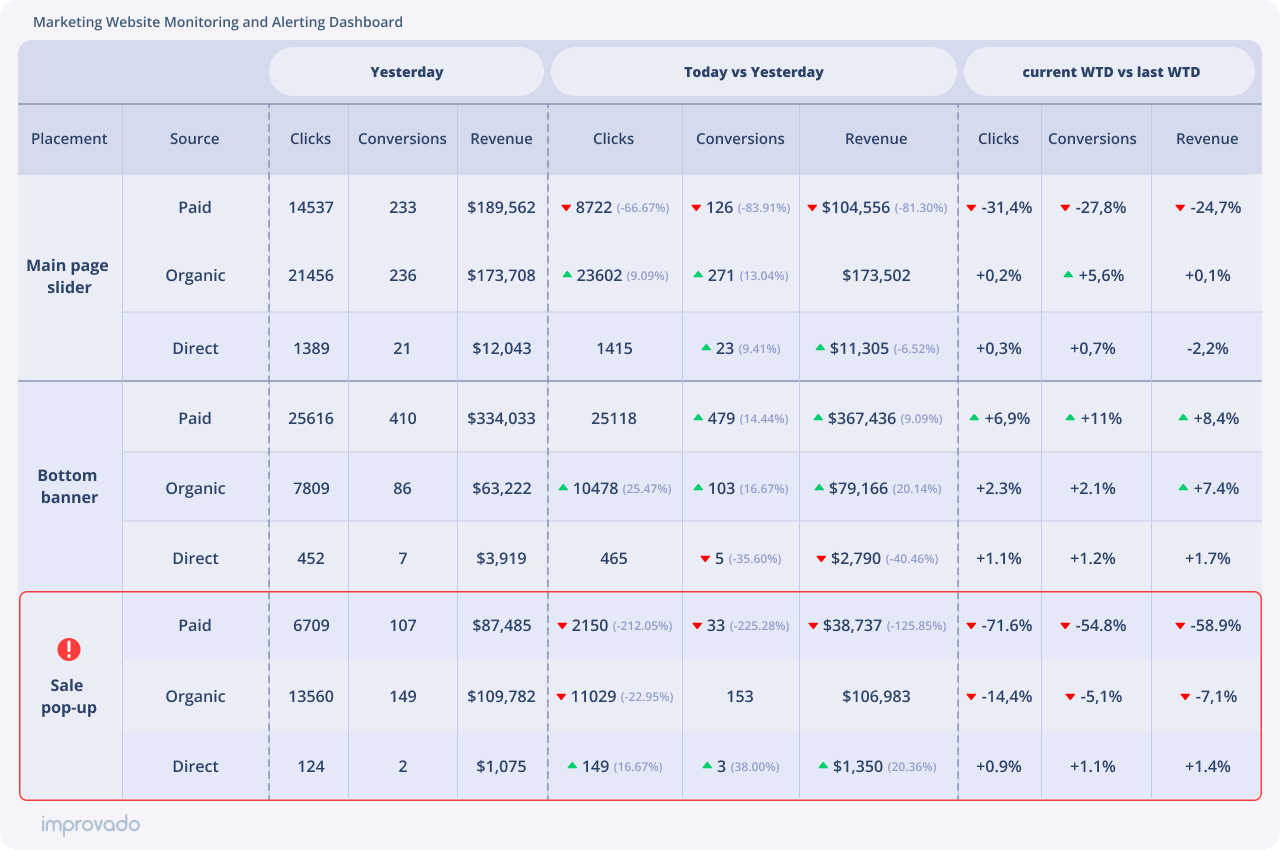
Here are a couple of broad ecommerce metrics the dashboard might include:
- Website traffic metrics: Number of visitors, where traffic is coming from, average session duration, and so on. These metrics offer insights into user engagement levels and potential friction points.
- Promotional performance metrics: CTR for all on-site promotional placements, the conversion rate for all placements, and engagement metrics if needed.
- Conversion and sales metrics: Depending on your objectives, you may track sales volume, cart abandonment rate, etc.
- Website performance metrics: Sometimes, it's not a problem of messaging, design, or placement, but rather a website performance issue or malfunction. Track page loading time, error rate, time to first byte, and other metrics indicating your website health.
- Real-time alerts: Thus, analysts can immediately identify and respond to issues like sudden drops in engagement or technical problems with promotional features. This capability ensures that potential impediments to sales or user experience are swiftly addressed.
Ecommerce Analytics for Effective Customer Retention

Ecommerce analytics enable brands to pinpoint and respond to the nuanced needs and behaviors of their customer base, which ultimately leads to higher customer retention rates.
Key ecommerce reporting strategies for retention:
- Sequence analysis: Employ sequence analysis techniques to identify patterns in the purchasing journey. Understanding the order in which products are bought can unveil cross-selling and upselling opportunities tailored to the customer's lifecycle stage.
- Basket analysis: Utilize basket analysis to understand which products are frequently purchased together. This insight supports the creation of bundled offers that increase average order value and encourage repeat purchases.
- Dynamic CLV models: Adopt dynamic models that adjust CLV predictions based on real-time customer interactions and feedback. This nuanced approach allows for more accurate targeting and resource allocation to high-potential customer segments.
- Segment-specific CLV insights: Break down CLV calculations by customer segment to identify which groups represent the most value over time. Tailor retention efforts to protect and grow these high-value segments.
- Root cause analysis: Combine churn data with customer feedback to pinpoint specific issues or trends that lead to customer attrition. Addressing these root causes directly can significantly reduce churn rates.
- Engagement scoring: Develop an engagement scoring system to quantify how interactively customers engage with your brand across different channels. High-scoring customers can be targeted with special loyalty programs, while low-scoring ones may need re-engagement campaigns.
Ecommerce Analytics for Personalization
Ecommerce data holds an enormous amount of insights for brands seeking to tailor the shopping experience to individual customer preferences and behaviors.
By leveraging detailed analytics, companies can unlock a deeper understanding of their customers, facilitating personalized interactions that drive engagement, loyalty, and sales:
- Behavioral tracking: Utilize cookies and session data to track user actions across your website. This includes page views, time spent on the website, and interactions with product listings and content, enabling a nuanced understanding of customer interests and preferences.
- Customer profiles: Aggregate data from various touchpoints, including transaction history, customer service interactions, and social media activity, to build comprehensive customer profiles. These profiles are instrumental in delivering highly personalized content and recommendations.
- Personalized email campaigns: Use customer data to segment email lists and tailor messaging according to past purchase behavior, browsing history, and engagement levels. Personalized emails significantly outperform generic blasts in open rates, click-through rates, and conversion.
- Conversion tracking: Monitor how personalized interactions across different channels contribute to final conversion events. This enables a clear understanding of which personalization tactics are most effective at driving sales.
Through advanced data collection, dynamic personalization strategies, and a commitment to leveraging customer feedback, businesses can significantly enhance the customer journey, leading to increased loyalty and revenue.
Maximizing Revenue with Advanced Ecommerce Analytics Tools
Simplify ecommerce analysis by partnering with a robust analytics and data management platform.
Improvado is a marketing analytics solution, tailored for large enterprises. As a central hub, it integrates with over 500 Ad, ecommerce, and CRM platforms, centralizing data into a cohesive marketing dataset.
On top of this dataset, Improvado builds an ecommerce dashboard, revenue attribution dashboard tailored to your company's needs, or any other visualizations. Solid data foundation powered by Improvado provides timely and accessible insights for near-real-time optimization opportunities.
.png)
.jpeg)


.png)
